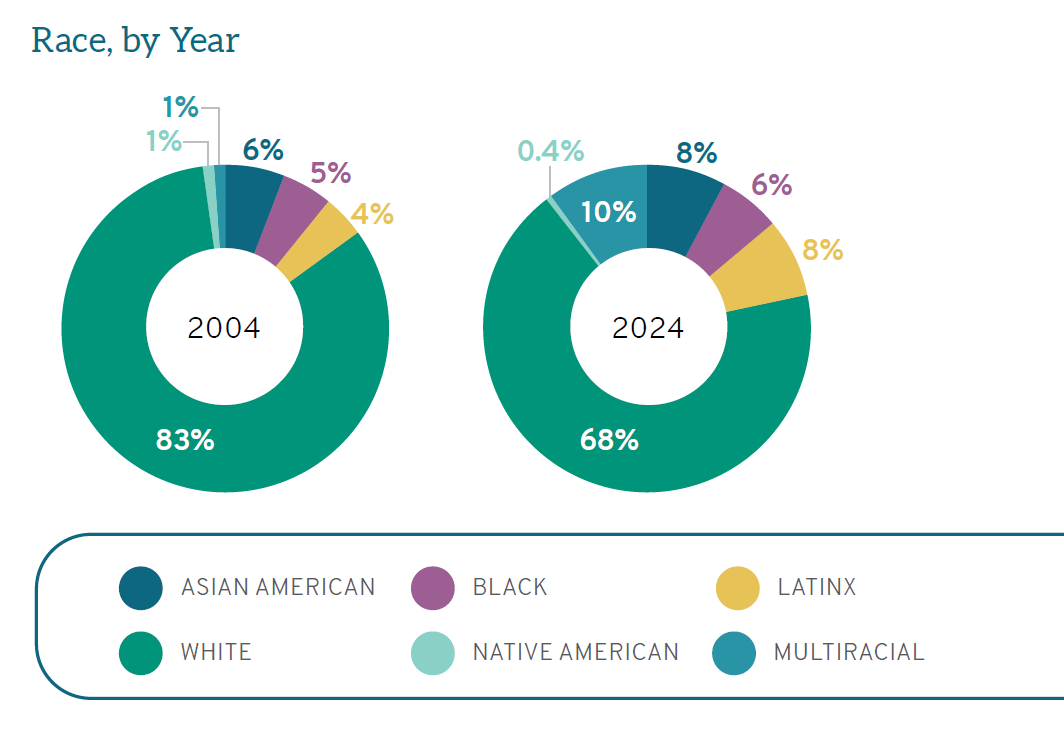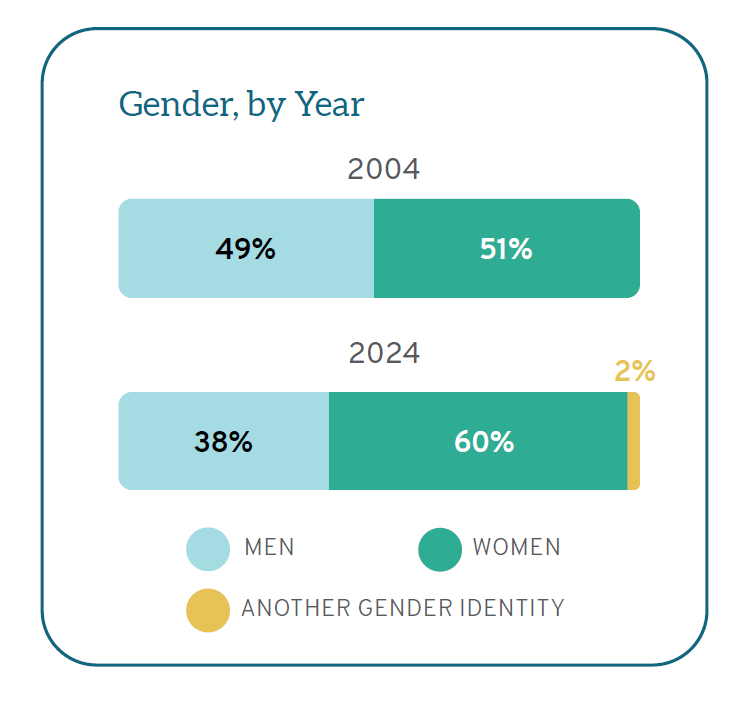The 2024 LSSSE annual report 20 Years of LSSSE is now available on the LSSSE website. The report emphasizes the progress law schools have made in fostering inclusivity and preparing students for diverse workplaces while also addressing areas that need improvement, such as affordability and equitable support for all students. In this blog post, we will highlight some of the shifting demographics of the law student population that have occurred since LSSSE’s inaugural survey in 2004.
Law students are becoming an ever-more diverse bunch—though that progress may yet be stymied by the end of affirmative action as we know it. Over the past two decades, we have seen increases in diversity as measured by race, gender, age, and sexual orientation. Students of color, including those who identify as Black, Latinx, Asian American, Native American, and multiracial, accounted for just 17% of all LSSSE respondents in 2004; by 2024 their representation had grown to one-third (32%). In particular, the multiracial population has grown substantially (from 1% in 2004 to 10% in 2024, with roughly equal representation between multiracial men and women) as has the percentage of Latinx students (growing from 4% to 8% of law students in twenty years). Alarmingly, the Native American population has remained at or below 1% throughout the twenty years of LSSSE data collection, with a slight decline in recent years.

The percentage of women in legal education has continued to increase in the past decade, from 51-52% between 2004 and 2014 to now 60%. Law students are also trending younger, with a full 11% of current students reporting their age as under 23 years (compared to only 1% in 2004, up from 9% in 2019). There are also higher percentages of students identifying as lesbian, gay, or bisexual; currently, the LGBTQ+ population together represents 17% of all law students, up from just 4% in 2009 (as LSSSE first began collecting these data in 2005) and 9% in 2019. By any measure, legal education is more diverse now than at any point previously documented.
For more information on the shifts in legal education that occurred over the past twenty years, please visit the LSSSE website to read the entire report. In our next post, we will provide a snapshot of how support for law students has evolved over the last twenty years, including a concerning decrease in relationship satisfaction that warrants special attention.
